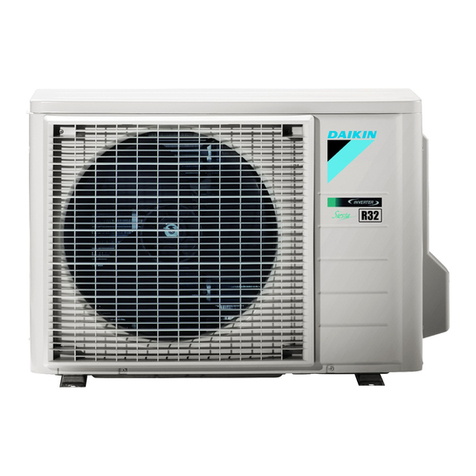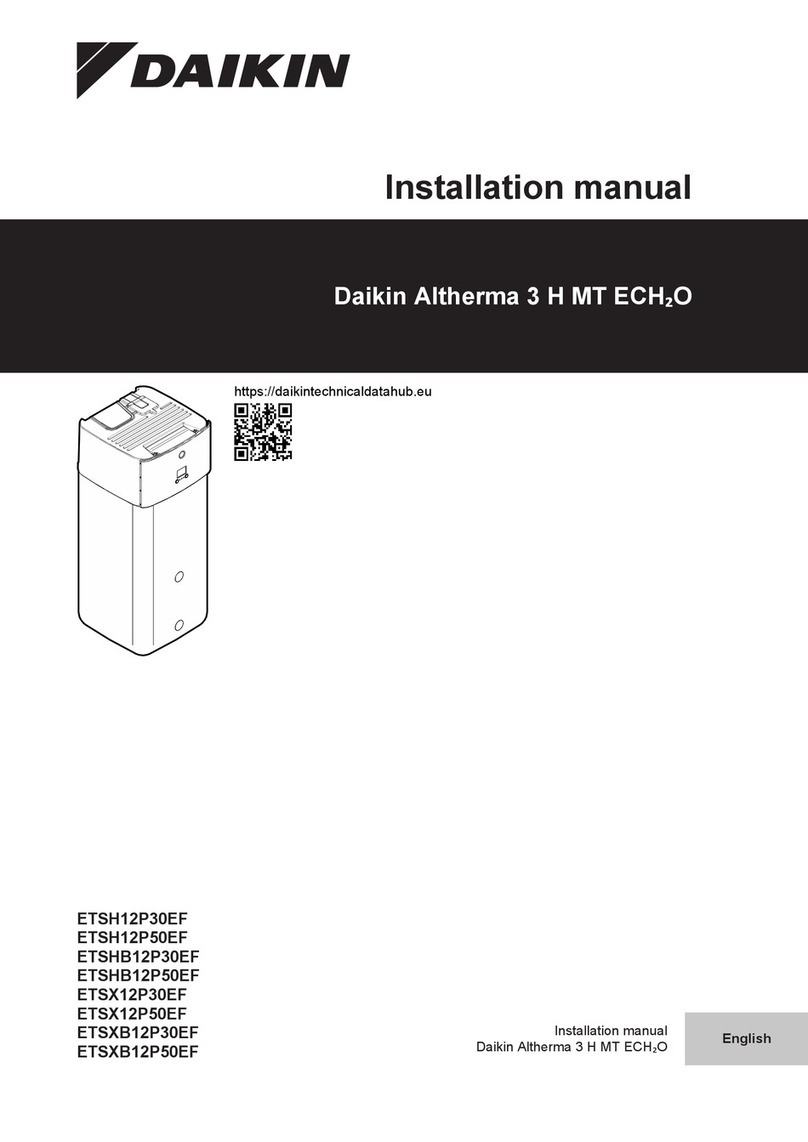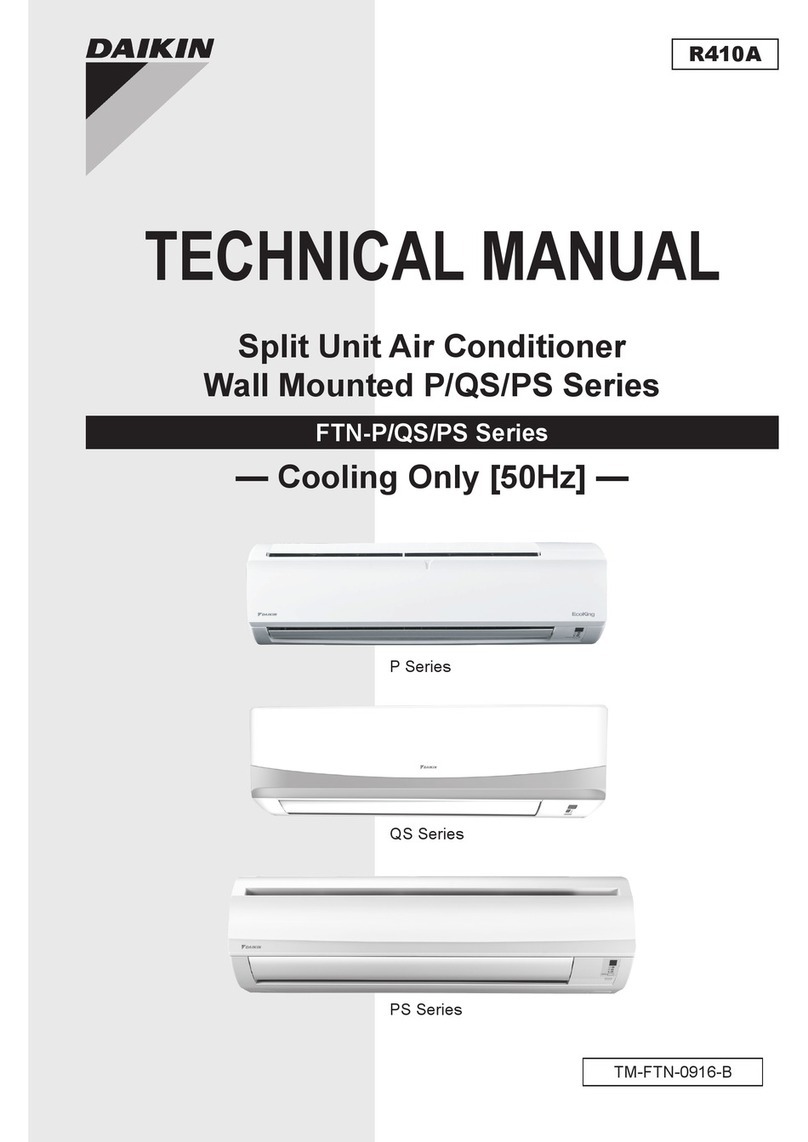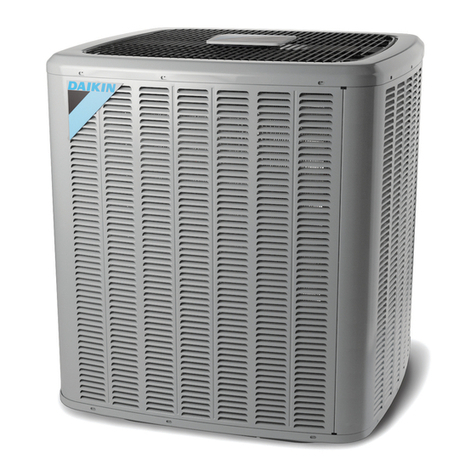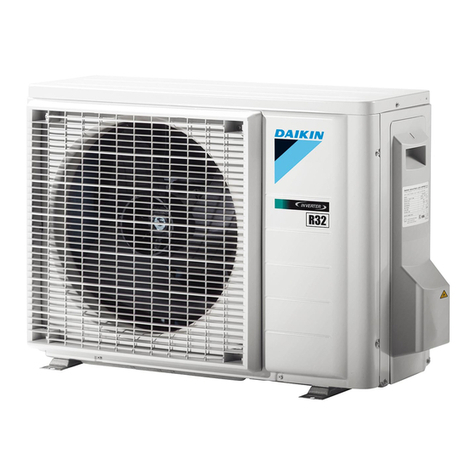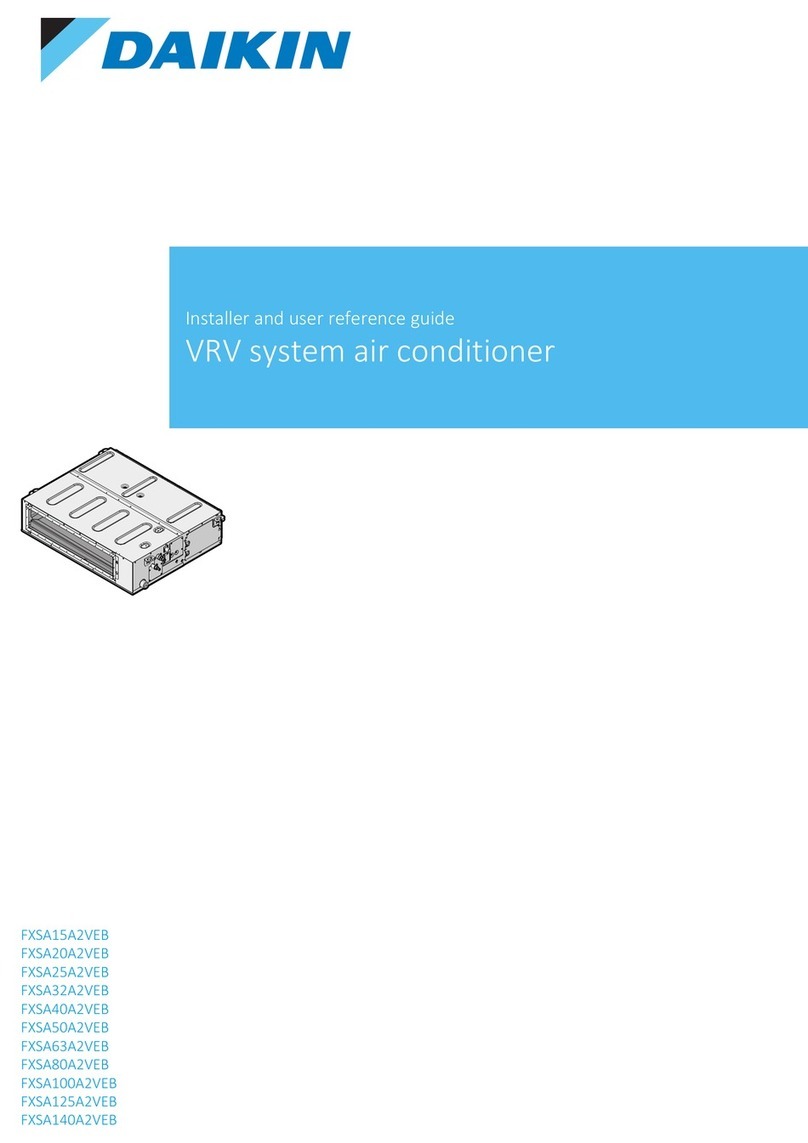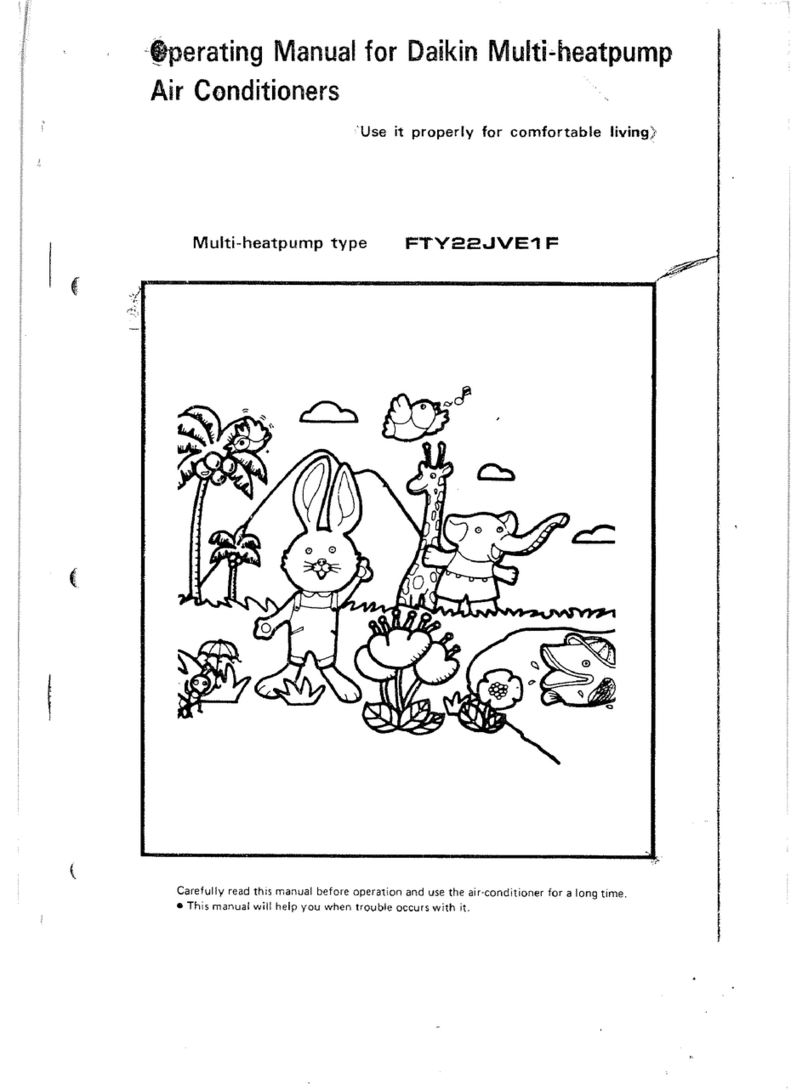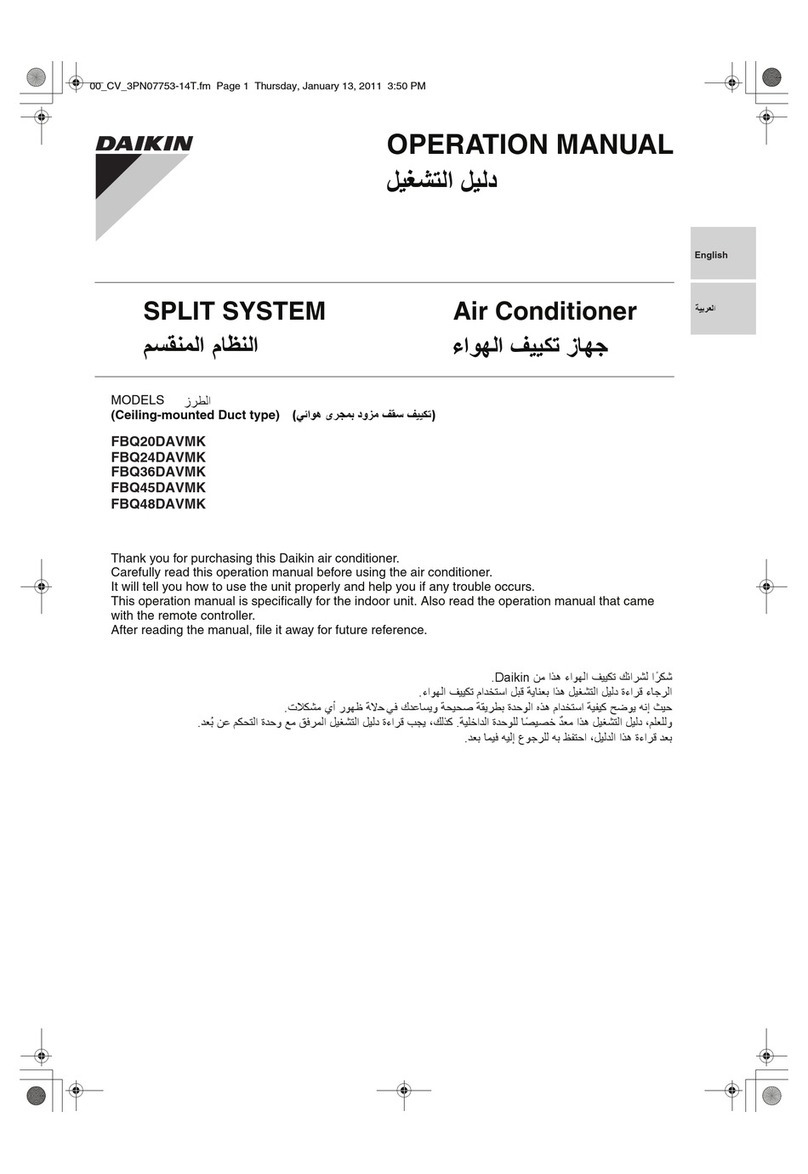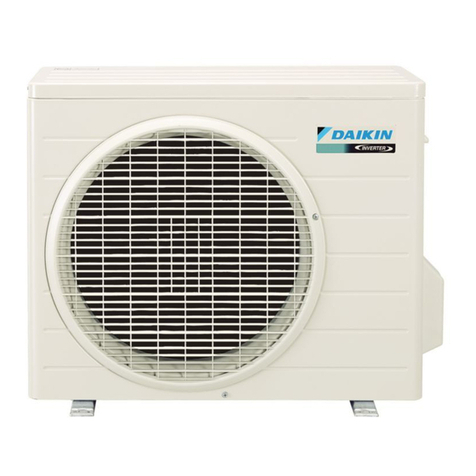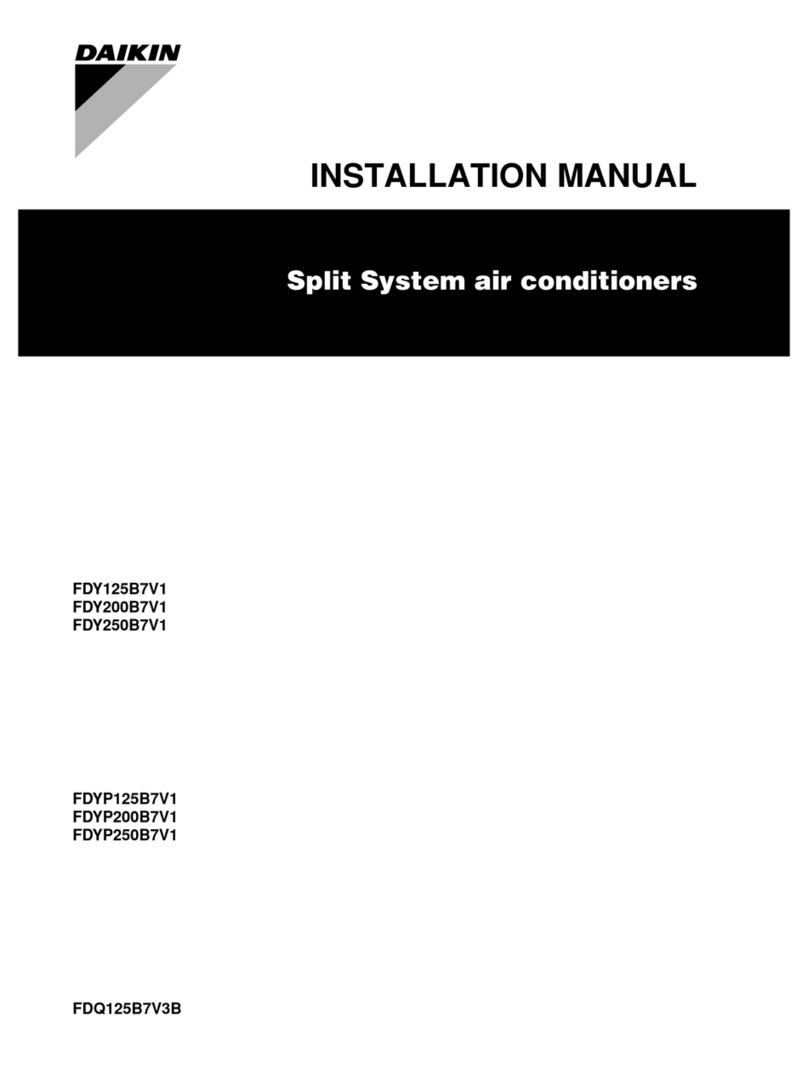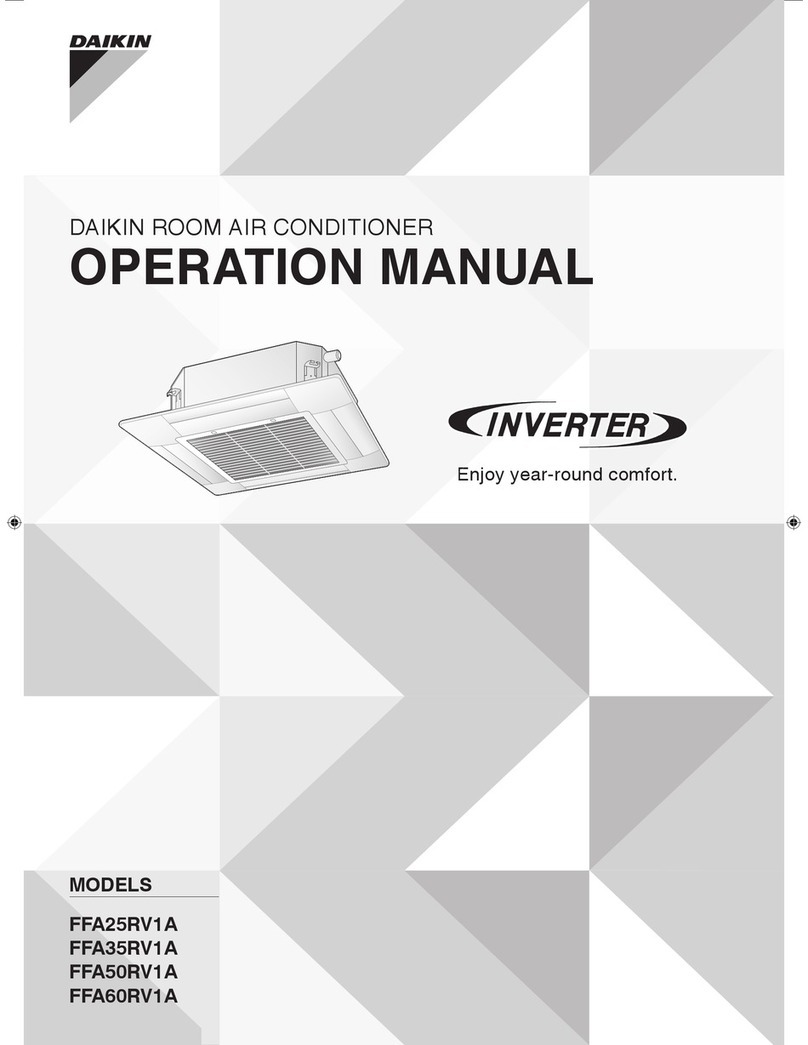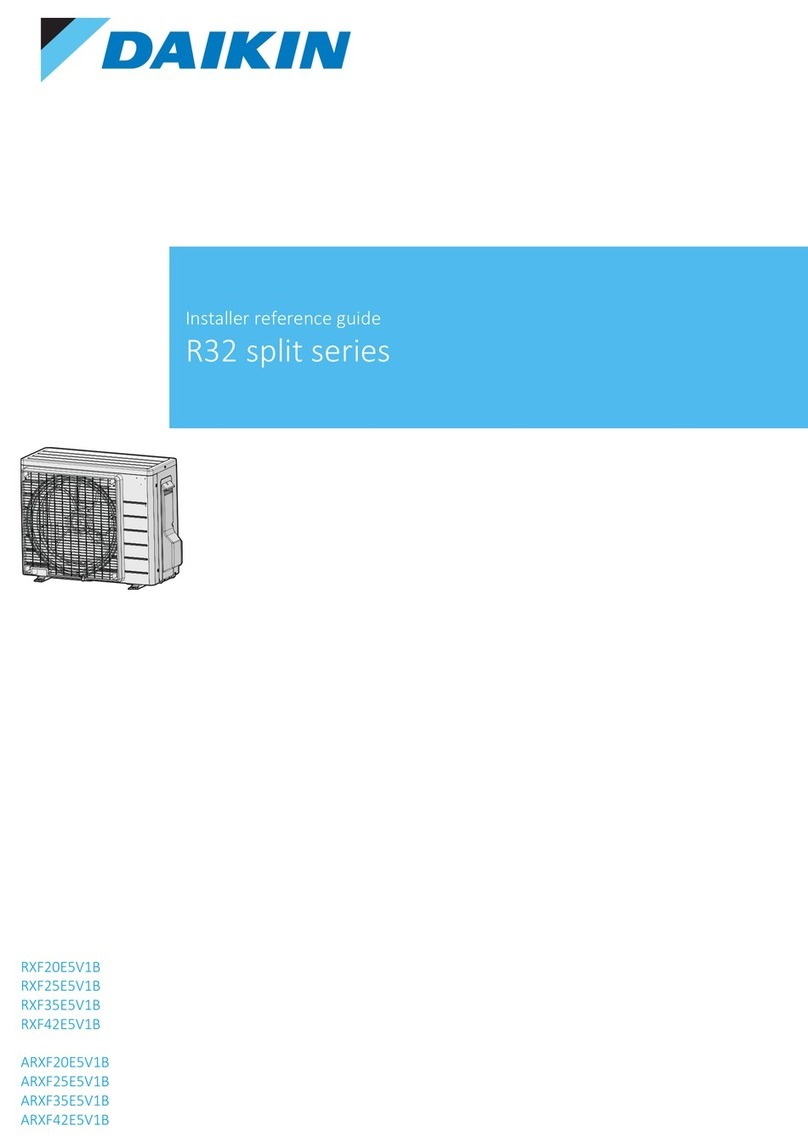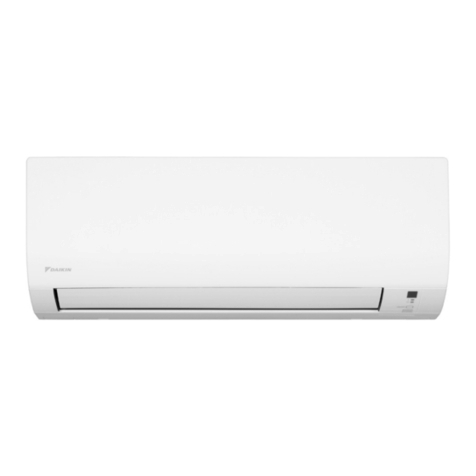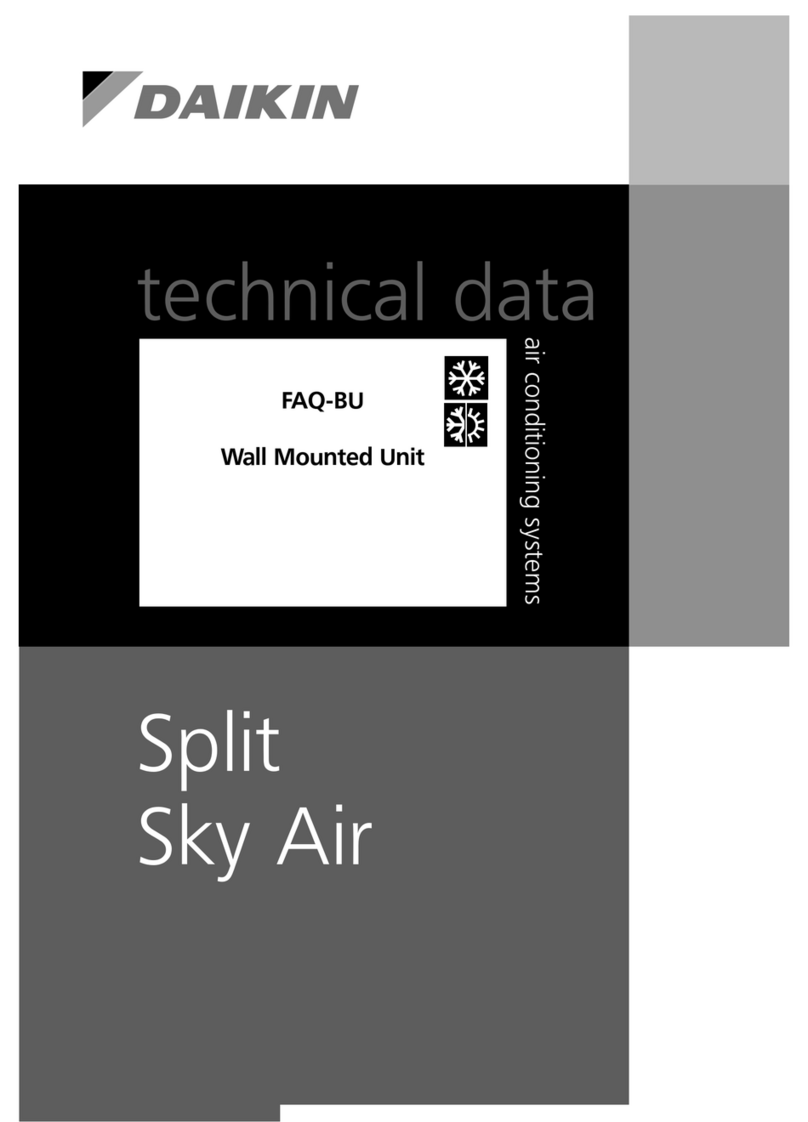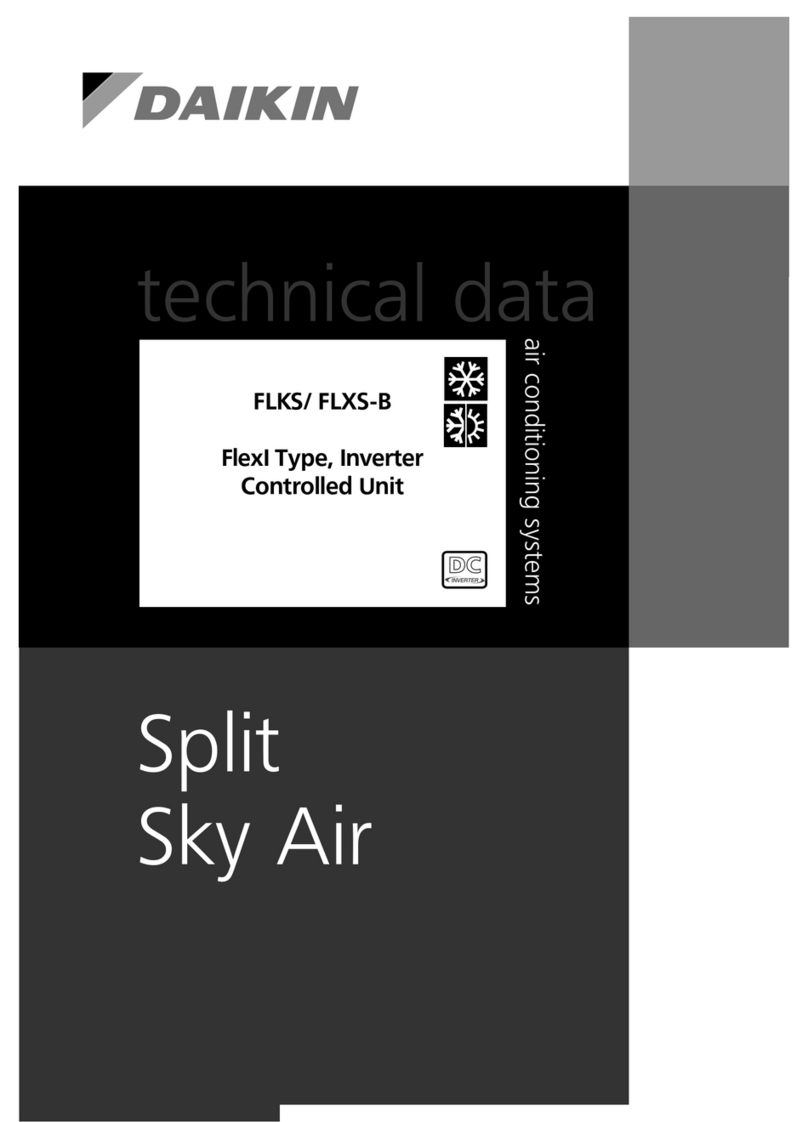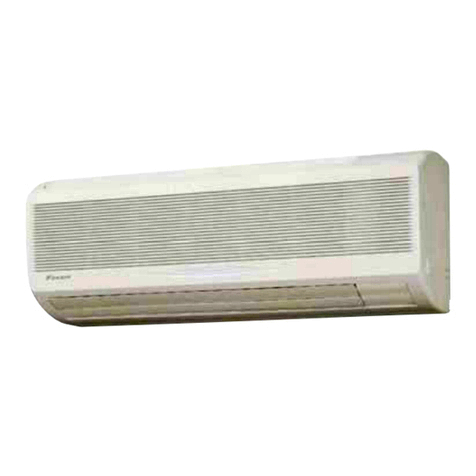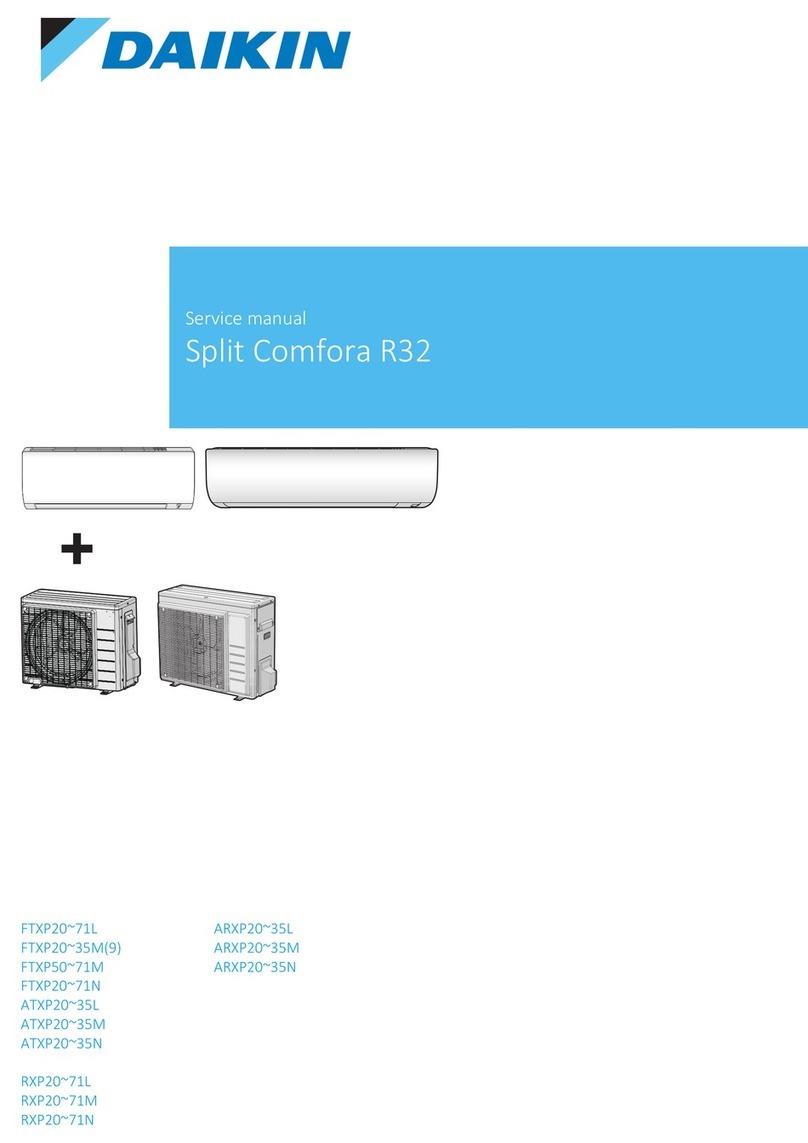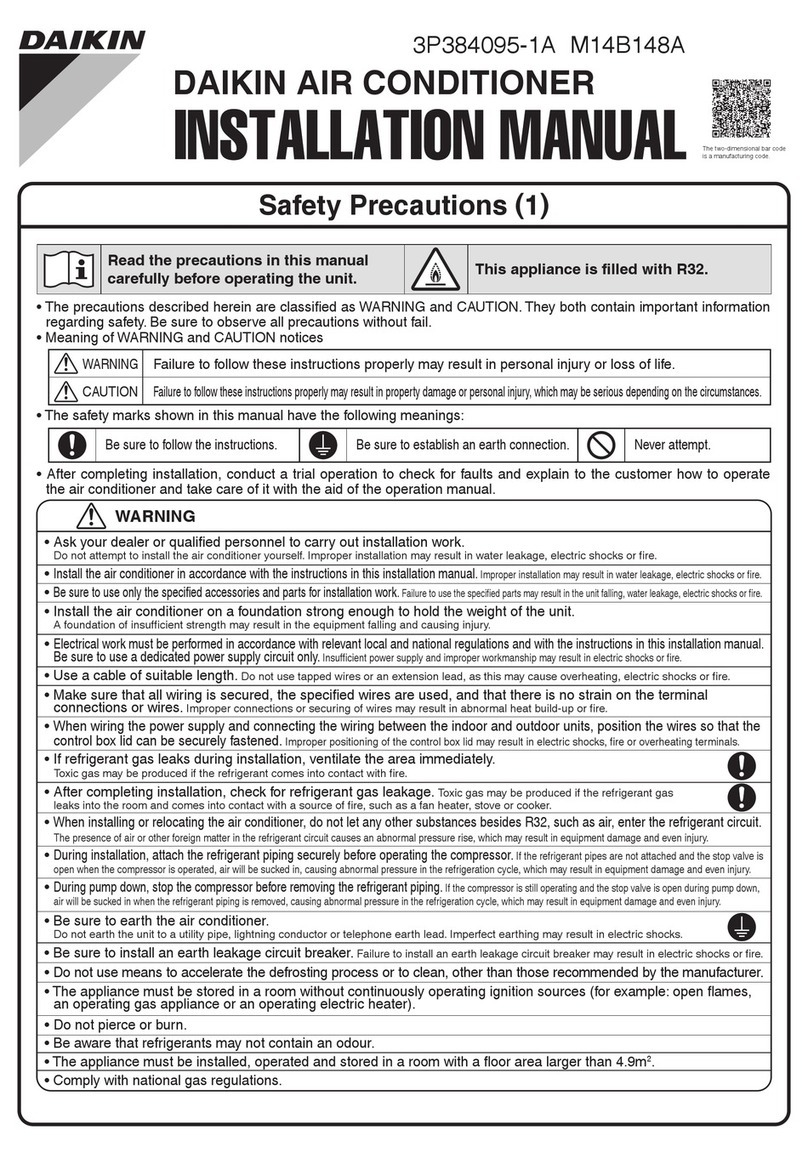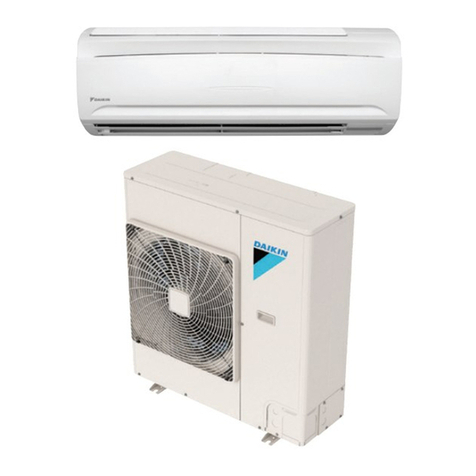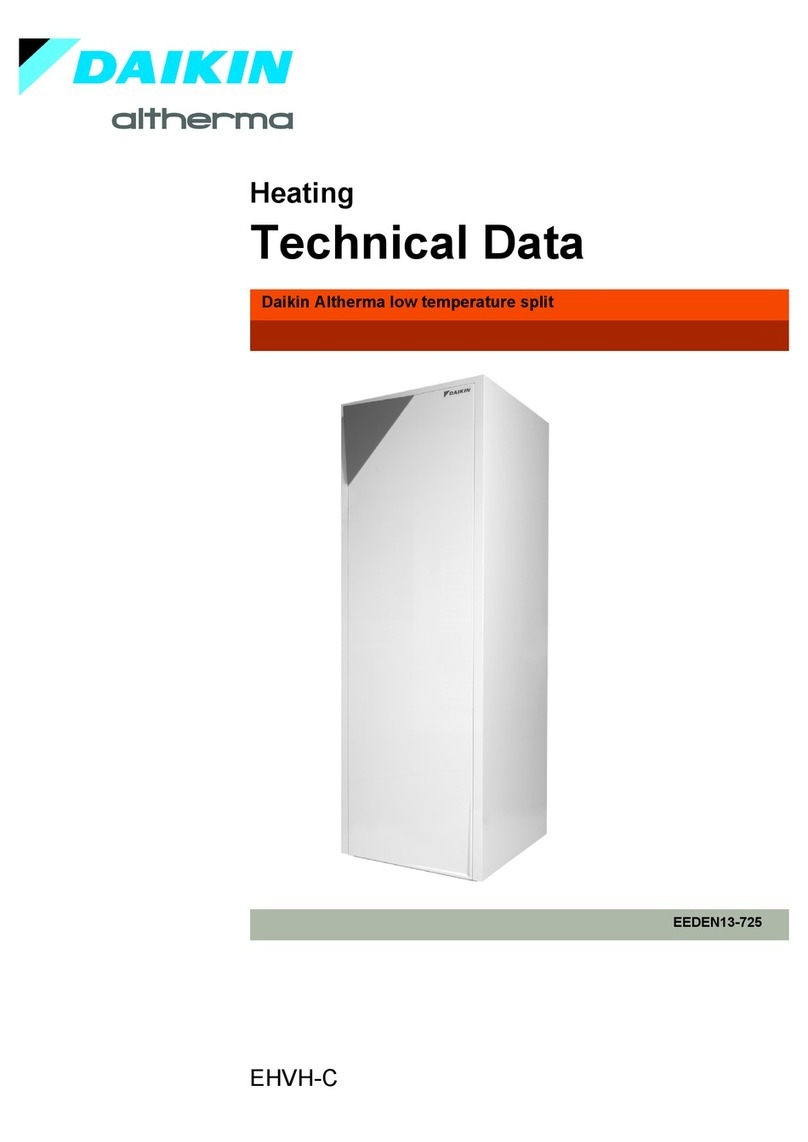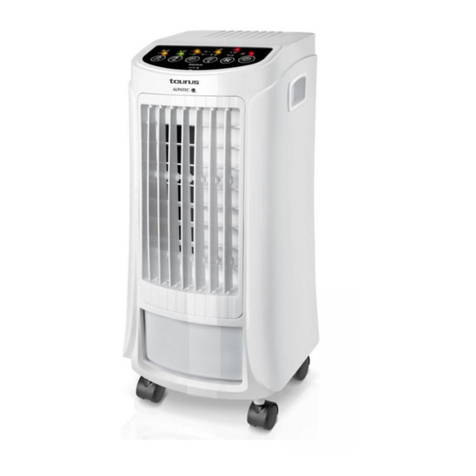
5
WARNING
toPrevent PossiBle eqUiPment damage, ProPertY
damage, Personal injUrY or death, the Following
BUllet Points mUst Be oBserved when installing
the Unit.
imPortant note: remove wood shiPPing rails
Prior to installation oF the Unit.
all installations:
imPortant note: Unit shoUld be energized 24 hoUrs
prior to compressor start Up to ensUre crankcase
heater has sUfficiently warmed the compressors.
compressor damage may occUr if this step is not
followed.
note: aPPliance is shiPPed From FactorY For
vertical dUct aPPlication.
Proper installation of the unit ensures trouble-free
operation. Improper installation can result in problems
ranging from noisy operation to property or equipment
damages, dangerous conditions that could result in injury
or personal property damage and that are not covered by
the warranty. Give this booklet to the user and explain it’s
provisions. The user should retain these instructions for
future reference.
• For proper ame pattern within the heat exchanger
and proper condensate drainage, the unit must be
mounted level.
• The ue outlet must be at least 12 inches from any
opening through which ue gases could enter a
building, and at least three feet above any forced
air inlet located within ten feet. The economizer/
manual fresh air intake/motorized fresh air intake
and combustion air inlet mounted on the unit are not
affected by this restriction.
• To avoid possible corrosion of the heat exchanger,
do not locate the unit in an area where the outdoor
air (i.e. combustion air for the unit) will be frequently
contaminated by compounds containing chlorine
or uorine. Common sources of such compounds
include swimming pool chemicals and chlorine
bleaches, paint stripper, adhesives, paints, varnishes,
sealers, waxes (which are not yet dried) and solvents
used during construction and remodeling. Various
commercial and industrial processes may also be
sources of chlorine/uorine compounds.
• The unit shall not be connected to a chimney ue
serving a separate appliance designed to burn solid
fuel.
• To avoid possible illness or death of the building
occupants, do NOT locate outside air intake device
(economizer, manual fresh air intake, motorized fresh
air intake) too close to an exhaust outlet, gas vent
termination, or plumbing vent outlet. For specic
distances required, consult local codes.
• Allow minimum clearances from the enclosure for
re protection, proper operation, and service access
(see unit clearances). These clearances must be
permanently maintained.
• The combustion air inlet and ue outlet on the unit
must never be obstructed. If used, do not allow the
economizer/manual fresh air damper/ motorized fresh
air damper to become blocked by snow or debris. In
some climates or locations, it may be necessary to
elevate the unit to avoid these problems.
• When the unit is heating, the temperature of the return
air entering the unit must be a minimum of 55° F.
groUnd level installations onlY:
• When the unit is installed on the ground adjacent
to the building, a level concrete (or equal) base is
recommended. Prepare a base that is 3” larger than
the package unit footprint and a minimum of 3” thick.
• The base should also be located where no runoff of
water from higher ground can collect in the unit.
rooF toP installations onlY:
• To avoid possible property damage or personal injury,
the roof must have sufcient structural strength to
carry the weight of the unit(s) and snow or water
loads as required by local codes. Consult a structural
engineer to determine the weight capabilities of the
roof.
• The unit may be installed directly on wood oors or on
Class A, Class B, or Class C roof covering material.
• To avoid possible personal injury, a safe, at surface
for service personnel should be provided.
• As indicated on the unit data plate, a minimum
clearance of 36” to any combustible material is
required on the furnace access side of the unit. All
combustible materials must be kept out of this area.
• This 36” clearance must also be maintained to
insure proper combustion air and ue gas ow. The
combustion air intake and furnace ue discharge must
not be blocked for any reason, including blockage by
snow.
• Adequate clearances from the furnace ue discharge
to any adjacent public walkways, adjacent buildings,
building openings or openable windows must be
maintained in accordance with the latest edition of the
National Fuel Gas Code ANSI Z223.1/NFPA 54.
• Minimum horizontal clearance of 48” from the furnace
ue discharge to any electric meters, gas meters,
regulators and relief equipment is required.
Unit PrecaUtions
• Do not stand or walk on the unit.
• Do not drill holes anywhere in panels or in the base
frame of the unit except where indicated. Unit access
panels provide structural support.
• Do not remove any access panels until unit has been
installed on roof curb or eld supplied structure.
• Do not roll unit across nished roof without prior
approval of owner or architect.
